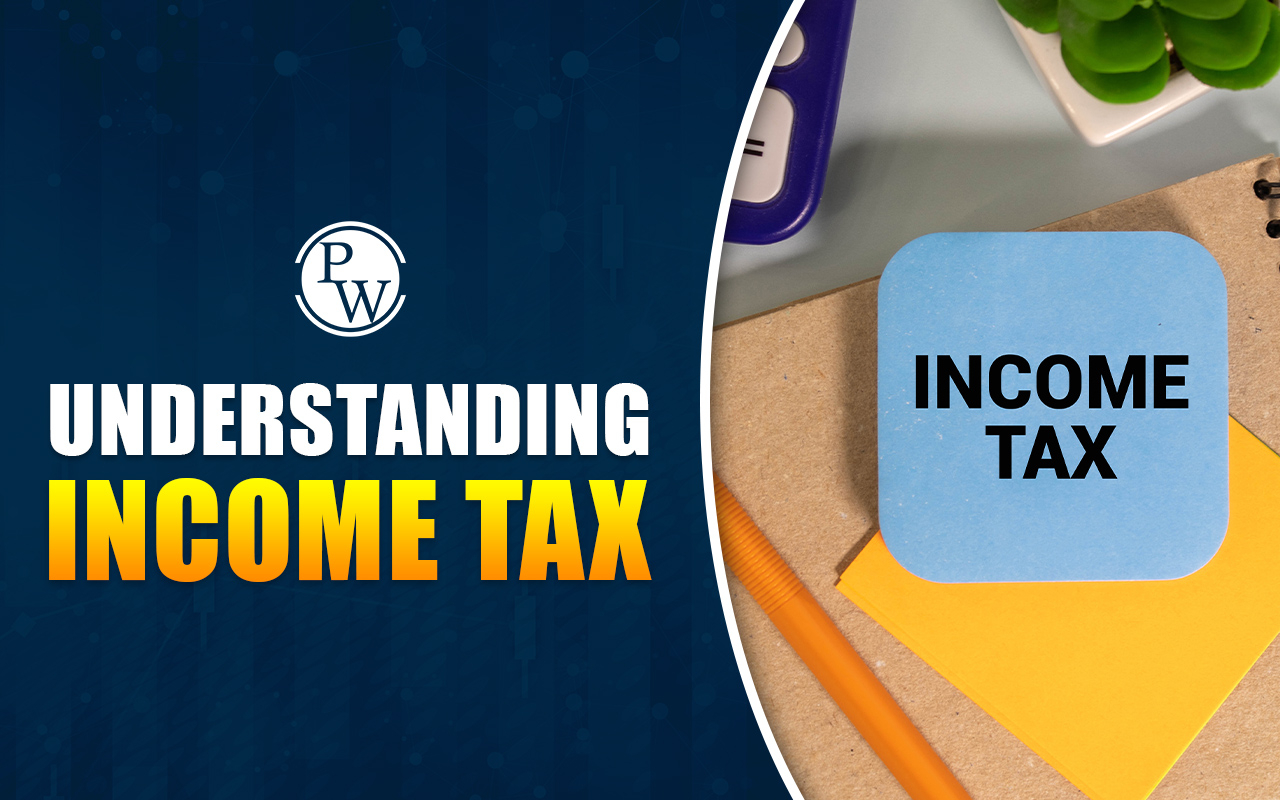
Share Market Interview Questions: Are you preparing for a share market interview? Understanding stock market concepts is crucial for roles like trader, analyst, or financial advisor. Employers assess your market knowledge, risk management skills, and decision-making abilities.
This guide covers 25 common share market interview questions and answers for freshers to help you prepare for personal interviews and online selection tests. These share market interview questions with answers will boost your confidence and improve your chances of success.
Learn how to tackle tricky share market interview questions and answers to demonstrate your expertise. Whether you're a beginner or looking to refine your knowledge, this guide will help you prepare effectively for a share market interview.
Understanding the Share Market
The share market is where people buy and sell shares of companies. It helps businesses raise money and allows investors to earn returns. Companies issue shares through an Initial Public Offering (IPO), and these shares are later traded in the secondary market. Prices fluctuate based on company performance and market trends.
For example, if a company reports high profits, its stock price may rise. In India, SEBI regulates the market, with major exchanges like BSE and NSE. While investing offers growth opportunities, it also carries risks—stocks can lose value if a company underperforms. Understanding these basics is crucial for share market interview questions.
Top 25 Share Market Interview Questions with Answers
The share market is a dynamic space where investors, traders, and analysts interact with financial securities. Preparing for a share market interview requires a solid understanding of financial concepts, trading strategies, risk management, and market regulations.
Here are 25 important share market interview questions with answers that cover basic to advanced topics, helping both freshers and experienced candidates prepare effectively for their interviews:
Question 1: What is the difference between primary and secondary markets?
Answer: The primary market is where new securities are issued for the first time by companies to raise capital. Investors buy these securities directly from the issuer through Initial Public Offerings (IPOs) or private placements.
The secondary market is where already issued securities are traded among investors. Stock exchanges like the NSE (National Stock Exchange) and BSE (Bombay Stock Exchange) facilitate these transactions, allowing investors to buy and sell shares without involving the issuing company.
Example: When a company like XYZ Ltd. goes public and issues shares for the first time, it happens in the primary market. Once these shares are listed on a stock exchange, they can be bought and sold among investors in the secondary market.
Question 2: What is an Initial Public Offering (IPO), and how does it work?
Answer: An IPO is when a private company offers its shares to the public for the first time to raise capital. This process involves several steps:
- The company appoints investment banks to underwrite the issue.
-
A Draft Red Herring Prospectus (DRHP) is submitted to the regulator (SEBI in India).
-
The company sets the price of shares through fixed pricing or book-building methods.
-
Investors apply for shares, and after allocation, the stock is listed on a stock exchange for public trading.
Example: In 2021, Zomato launched its IPO, allowing retail and institutional investors to buy shares before they got listed on the stock exchange.
Question 3: What are the different types of stock market orders?
Answer: Stock market orders determine how a trade is executed. The main types are:
- Market Order: Executes immediately at the best available price.
-
Limit Order: Executes only at a specific price set by the investor.
-
Stop-Loss Order: Automatically sells a stock when it reaches a predefined price to limit losses.
-
Bracket Order: Combines limit and stop-loss orders to manage both entry and exit prices efficiently.
Example: If an investor places a limit order to buy a stock at ₹100, the trade will execute only when the price reaches ₹100 or lower.
Question 4: How is stock price determined in the market?
Answer: Stock prices fluctuate based on supply and demand dynamics. Factors influencing stock prices include:
- Company performance (earnings, revenue growth)
-
Market sentiment (investor confidence)
-
Economic factors (inflation, interest rates)
-
Industry trends (sector performance)
-
News and events (government policies, global crises)
Example: If a company reports strong quarterly earnings, demand for its stock increases, pushing the price higher.
Question 5: What is Market Capitalization, and how is it calculated?
Answer: Market capitalization (market cap) represents the total value of a company’s outstanding shares. It is calculated as:
Market Cap = Share Price × Total Number of Outstanding Shares
Example: If a company's share price is ₹500 and it has 10 million outstanding shares, its market cap is:
500 × 10,000,000 = ₹5,000 crore
Question 6: What are Blue-Chip Stocks?
Answer: Blue-chip stocks belong to financially stable, well-established companies with a long history of steady earnings and reliability. These stocks are known for:
- Strong market presence
-
Consistent dividends
-
Resilience during market downturns
Example: Reliance Industries, TCS, and Infosys are considered blue-chip stocks in India.
Read More - Why Choose PW Stock Market Course?
Question 7: What is the P/E Ratio, and why is it important?
Answer: The Price-to-Earnings (P/E) Ratio measures how much investors are willing to pay for a stock relative to its earnings. It is calculated as:
P/E Ratio = Current Share Price ÷ Earnings per Share (EPS)
A high P/E ratio suggests that investors expect strong future growth, while a low P/E ratio may indicate undervaluation or poor growth prospects.
Example: If a stock is trading at ₹200 and its EPS is ₹10, the P/E ratio is 20.
Question 8: How do dividends work in the share market?
Answer: Dividends are payments made by companies to their shareholders from profits. They can be:
- Cash dividends (direct payment per share)
-
Stock dividends (additional shares given to investors)
Example: If a company declares a dividend of ₹5 per share and you own 100 shares, you receive ₹500 as a dividend payout.
Question 9: What is the difference between a Bull Market and a Bear Market?
Answer: A Bull Market is when stock prices are rising, investor confidence is high, and economic conditions are favorable.
A Bear Market is when stock prices decline by 20% or more, investor sentiment is negative, and economic conditions are weak.
Example: The COVID-19 pandemic crash in March 2020 led to a bear market, while the recovery in 2021 was a strong bull market.
Question 10: What are some common stock market indices?
Answer: Stock market indices track the performance of selected stocks. Common indices include:
- Sensex (30 large-cap stocks in BSE)
-
Nifty 50 (50 large-cap stocks in NSE)
-
Dow Jones (US market index)
-
S&P 500 (500 largest US companies)
Example: If the Sensex rises by 500 points, it indicates an overall gain in the stock market.
Question 11: What is Algorithmic Trading and its impact on stock markets?
Answer: Algorithmic trading (Algo Trading) involves using computer programs to execute trades based on predefined conditions.
Impact on Markets:
-
Increases liquidity and efficiency
-
Reduces human errors
-
Can cause flash crashes (sudden market drops)
Example: High-Frequency Trading (HFT) firms execute thousands of trades per second using algorithmic trading.
Question 12: What is the role of SEBI in the stock market?
Answer: SEBI (Securities and Exchange Board of India) regulates the Indian stock market by:
Protecting investors
-
Preventing fraud
-
Overseeing IPOs and mutual funds
Example: In 2021, SEBI introduced stricter rules for IPO disclosures to enhance transparency.
Question 13: What is the difference between Fundamental Analysis and Technical Analysis?
Answer: Fundamental Analysis evaluates a company's financial health by analyzing revenue, earnings, assets, liabilities, and macroeconomic factors. It helps investors identify long-term investment opportunities.
Technical Analysis studies historical price movements and trading volume using charts, patterns, and indicators like Moving Averages and RSI (Relative Strength Index). It is mainly used for short-term trading.
Example:
-
A fundamental analyst will check a company's P/E ratio, balance sheet, and earnings reports before investing.
-
A technical analyst will look at candlestick patterns, moving averages, and support/resistance levels to decide when to buy or sell.
Question 14: What are Derivatives in the Share Market?
Answer: Derivatives are financial contracts whose value depends on an underlying asset (stocks, commodities, indices). The main types include:
- Futures: Agreement to buy/sell an asset at a future date at a fixed price.
-
Options: Right (but not obligation) to buy/sell at a fixed price before a specific date.
-
Swaps & Forwards: Custom agreements between parties to exchange financial instruments.
Example: A trader can buy a Nifty 50 futures contract if they expect the market to rise, locking in today’s price for future profit.
Question 15: What is Short Selling in the Stock Market?
Answer: Short selling is a trading strategy where investors sell borrowed shares, expecting the price to drop, and later buy them back at a lower price to return to the lender.
How it works:
-
Borrow shares from a broker.
-
Sell them at the current market price.
-
If the price drops, buy them back at a lower price and return them, making a profit.
Example: If a trader short-sells 100 shares of XYZ Ltd. at ₹200 and later buys them at ₹180, they make a profit of ₹20 per share (₹2,000 total).
Read More - Basic Stock Market Terminology for Beginners
Question 16: What are Circuit Limits in the Share Market?
Answer: Circuit limits are price bands set by stock exchanges to prevent extreme volatility in stock prices. They are categorized into:
- Upper Circuit: The highest price a stock can reach in a day.
-
Lower Circuit: The lowest price a stock can fall to in a day.
Example: If a stock has a 10% upper circuit, and its previous closing price was ₹100, it cannot trade above ₹110 in that session.
Question 17: What is the role of FIIs and DIIs in the stock market?
Answer: Foreign Institutional Investors (FIIs) and Domestic Institutional Investors (DIIs) play a crucial role in shaping stock market movements. Their investment decisions impact liquidity, stock prices, and overall market sentiment.
- Foreign Institutional Investors (FIIs): Overseas investors such as mutual funds and pension funds that invest in Indian stocks.
-
Domestic Institutional Investors (DIIs): Indian financial institutions, including mutual funds, insurance companies, and banks, that invest in the stock market.
Their buying and selling activity significantly influences stock prices and market trends.
Example: A large FII investment in Reliance Industries can boost stock prices, while heavy selling by DIIs may lead to a decline.
Question 18: What are Penny Stocks?
Answer: Penny stocks are low-priced, high-risk stocks of small companies with low market capitalization. They are:
- Highly volatile with unpredictable price swings.
-
Often illiquid, meaning they are hard to buy or sell in large quantities.
Example: If a stock trades at ₹5 per share, it is considered a penny stock. If it rises to ₹20, investors make a 400% gain, but the risk of loss is also high.
Question 19: What is an Index Fund?
Answer: An index fund is a mutual fund or ETF (Exchange-Traded Fund) that tracks a stock market index like the Nifty 50 or the Sensex. It provides diversification at a low cost and is ideal for passive investors.
Example: If you invest in an Nifty 50 Index Fund, you automatically hold shares of the 50 largest Indian companies.
Question 20: What is the Difference Between Trading and Investing?
Answer: Trading and investing are two distinct approaches to participating in the stock market. While both aim to generate profits, they differ in strategy, time horizon, and risk levels. The table below highlights the key differences between trading and investing:
|
Share Market Interview Questions: Trading vs. Investing |
|
|
Trading |
Investing |
|
Short-term (minutes to months) |
Long-term (years) |
|
Focus on price movements |
Focus on company fundamentals |
|
Uses technical analysis |
Uses fundamental analysis |
|
High risk, high reward |
Lower risk, steady returns |
Example: A trader buys and sells a stock within a week for quick profit, while an investor holds it for 5 years for long-term gains.
Question 21: What are Candlestick Patterns and How Are They Used?
Answer: Candlestick patterns help traders analyze price movements. Some common patterns include:
- Bullish Engulfing: Indicates a potential uptrend.
-
Doji: Represents market indecision.
-
Head and Shoulders: Signals a trend reversal.
Example: If a stock forms a bullish engulfing pattern, traders expect an upward price movement.
Question 22: What is Stop Loss, and why is it Important?
Answer: A stop-loss is a pre-set price at which a trader exits a position to limit losses. It is crucial in risk management.
Example: If an investor buys Tata Motors at ₹600 and sets a stop-loss at ₹580, the stock is automatically sold if it falls to ₹580, preventing further losses.
Question 23: What is Insider Trading and Why is it Illegal?
Answer: Insider trading occurs when someone buys or sells stocks using confidential company information before it is publicly available. It is illegal because it gives an unfair advantage.
Example: If a company executive knows about a major acquisition and buys stocks before the announcement, it is considered insider trading.
Question 24: What are Multibagger Stocks?
Answer: Multibagger stocks are those that generate returns several times their initial investment, driven by strong business performance and growth potential. These stocks often belong to companies with innovative products, strong financials, and long-term expansion strategies.
Example: A small company in the technology sector introducing a groundbreaking product can see its stock price multiply over the years, making it a multibagger investment.
Question 25: What is the Difference Between NSE and BSE?
Answer: NSE and BSE are the two major stock exchanges in India where companies list their shares for trading. While both serve the same purpose, they differ in terms of history, benchmark indices, and trading volumes. The table below highlights their key differences:
|
Share Market Interview Questions: NSE vs. BSE |
|
|
NSE (National Stock Exchange) |
BSE (Bombay Stock Exchange) |
|
Founded in 1992 |
Founded in 1875 |
|
Nifty 50 is the benchmark index |
Sensex is the benchmark index |
|
Higher trading volume |
Older and more established |
Example: If a stock is listed on both NSE and BSE, investors can buy/sell on either exchange based on liquidity and price.
These 25 share market interview questions with answers provide a solid foundation for anyone preparing for a share market interview. Whether you are a fresher or an experienced candidate, understanding these concepts will help you tackle complex questions with confidence.
How to Prepare for Share Market Interview Questions?
A share market interview tests your knowledge of stock market concepts, investment strategies, and current market trends. Here are some effective ways to prepare for share market interview questions:
1. Learn Basic and Advanced Stock Market Concepts: Start by understanding key terms like IPO, market capitalization, P/E ratio, and types of markets. Then, explore advanced topics such as derivatives, futures, options, and stock market regulations.
2. Stay Updated with Market Trends: Follow financial news, stock exchange updates, and global economic trends. Reading business newspapers, tracking stock market apps, and watching market analysis reports will keep you informed.
3. Practice Common Share Market Interview Questions with Answers: Review frequently asked share market interview questions with answers to familiarize yourself with potential topics. Practicing your responses will help you explain concepts confidently.
4. Gain Hands-On Experience: If possible, invest in stocks or use virtual trading platforms to understand real-time market movements. Practical experience in trading or investing can help you answer scenario-based questions effectively.
5. Analyze Financial Statements: Learn to read and interpret balance sheets, income statements, and cash flow statements. Understanding a company’s financial health is crucial for evaluating stocks.
6. Understand Stock Exchanges and Regulations: Be familiar with major stock exchanges like NSE and BSE and their benchmark indices, Nifty 50 and Sensex. Also, learn about SEBI, the regulatory body that governs the Indian stock market.
7. Prepare for Scenario-Based Questions: Interviewers may ask how you would react to different market situations, such as a sudden stock crash or interest rate hike. Practice structuring logical and well-reasoned responses.
8. Develop Analytical and Decision-Making Skills: Stock market roles require analyzing trends, predicting price movements, and making investment decisions. Improve your skills by studying charts, historical data, and company reports.
9. Learn Different Investment Strategies: Understand various investment approaches like value investing, growth investing, and momentum trading. This knowledge will help you discuss how different strategies suit different market conditions.
10. Communicate Clearly and Confidently: During a share market interview, your ability to explain complex stock market concepts in simple terms is as important as your technical knowledge. Avoid jargon and focus on clear communication.
By preparing well, you can confidently tackle share market interview questions for freshers and experienced candidates. Gaining market knowledge, staying updated on trends, and pursuing certification courses can enhance your skills and improve your job prospects.
Learn Stock Market with PW
The PW Stock Market for Beginners Online Course helps you understand stock trading, market analysis, and investment strategies. Build a strong foundation, explore market opportunities, and prepare for share market interview questions with practical insights.
Sign up for the PW Stock Market Online Course and start learning today!
FAQ
What are the common share market interview questions for freshers?
How can I prepare for a share market interview?
What skills are important for clearing a share market interview?
What types of job roles are available after clearing a share market interview?
How can mock interviews help in share market interview preparation?










